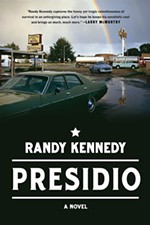Book Review: New in Print
This highly readable narrative picks up where Jane Jacobs' 1961 classic, The Death and Life of Great American Cities, left off
Reviewed by Cindy Widner, Fri., Jan. 8, 2010

Naked City: The Death and Life of Authentic Urban Places
by Sharon ZukinOxford University Press, 312 pp., $27.95
There are people who have never lived in New York City and will never tire of reading about it, and I am probably one of those people. Nevertheless, I was initially disappointed to realize that Naked City: The Death and Life of Authentic Urban Places concerns itself primarily with that metropolis; I had been hoping for some insight into the ways and means of gentrification and preservation a little closer to home. Turns out, of course, that those lessons are to be had even when author Sharon Zukin is laying out the specifics of, say, how Harlem became de-ghettoized or the ramifications of the Williamsburg hipster epidemic. In revisiting Jane Jacobs' highly influential 1961 classic, The Death and Life of Great American Cities, which advocated for small-scale, mixed-use, mixed-income neighborhoods in the face of massive urban renewal plans, Naked City focuses on three areas transformed by the by-now-familiar procession of flight, blight, creative colonization, media hype, governmental attention and boosterism, private investment, and high-end development – Williamsburg, Harlem, and the East Village – and then examines specific and unexpected ways that public spaces have been somewhat reclaimed or defended as what Zukin calls "authentic" places: corporate control (Union Square), food vending (Red Hook), and community gardening (East New York). In the process, Zukin makes the rather large point that Jacobs-style fetishization of a certain kind of neighborhood ultimately contributes in its own way to gentrification by appealing to wealthier people with wealthier tastes, displacing traditional businesses, and attracting development money. In grappling with notions of "authenticity" – which she poses as a question of who has a right to city spaces rather than who was there "originally" (an almost impossible claim to stake) – she concludes that the process of development in most central cities drives out poor and working-class populations entirely. The only way to maintain authenticity, she holds, is for "the state" to become involved in preservation – something Jacobs failed to see. Rather than "making markets," as she puts it, government needs to focus on preserving real affordability, providing services to all citizens, and retaining traditional residents. That bold proposition, along with Zukin's ability to assimilate what must be thousands of facts, events, and theories into a highly readable narrative, makes Naked City a revelation, no matter where you live.












